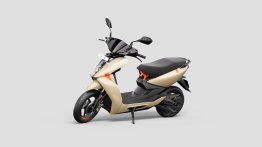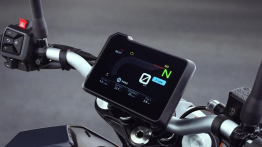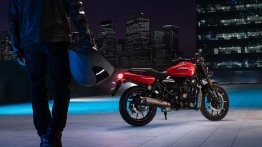“It’s a boy!”
November of 2001 was a rather interesting time to be. America had already attacked Afghanistan for ‘revenge’. Honda’s Activa was a few months old and kicking on the volumes front. Then, Bajaj introduced us to the shocker- the ‘definitely male’ Pulsar 150 and Pulsar 180. Taking on the Hero Honda CBZ and TVS Fiero, the Bajaj Pulsar offered several segment-first features.
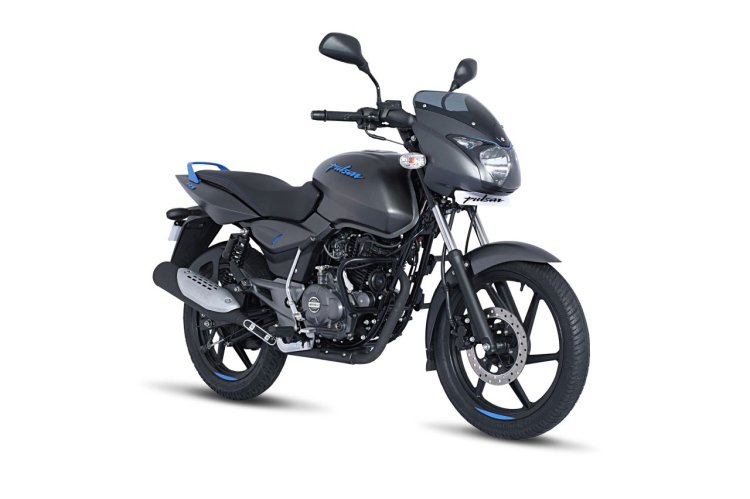
It is a full circle this time. Almost 18 years later, Bajaj has given us the Pulsar 125 Neon with a power output the same as that of the original Pulsar 150. Here's everything you need to know about the new entry-level Pulsar.
Background: Why did Bajaj bring the Pulsar brand down to the 125 cc territory
Shoddy government policies have played a major role in the current drop in sales. First, it was the rise in insurance costs and lending crisis. Then, new safety norms of CBS and ABS caused a rise in prices which further dented the sales numbers. As per the new government policy, all two-wheelers up to 125 cc will have to be fitted with a Combi Braking System (CBS) and two-wheelers with an engine displacement above 125 cc will have to be fitted with ABS.
While the segment has been witnessing some turbulence, Bajaj has been missing out on the share of the pie. In fact, with the production of Bajaj V12 shut down and the Discover 125 is bleeding to a low. A 125 cc Bajaj Pulsar allows the company to offer a cheaper Combined Braking System (CBS).
Also Read: Top 5 upcoming 250 cc motorcycles - IAB Picks
Using the popularity of the Bajaj Pulsar brand will further help Bajaj get a jumpstart in the segment. India loves to stick to buying existing brand names. Remember how the Bajaj Dominar 400 could not reach even near the initial target of 10,000 units a month?
Design: Is that a Pulsar 150? No, that’s the Bajaj Pulsar 125!
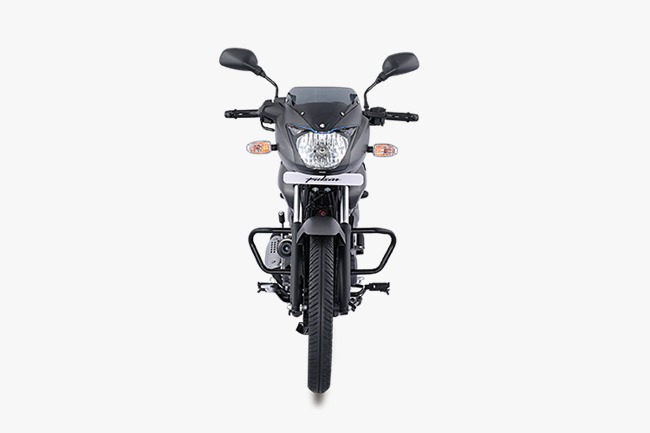
The engineers at Bajaj did not go back to a fresh drawing board, to reduce the development time and cost. Also, utilising the popular design language of the classic Pulsar 150 will also help prospective customers connect to the new bike. However, the Pulsar 125 Neon may eat into the sales of the Pulsar 150 Neon.
Subtle touches like coloured stitching on the seat and on the headlamp are welcome. Instrumentation console is shared with a mix of the digital-analogue unit from the Pulsar 150. Also, the digital panel continues to be offered with an amber backlight. The switchgear is not backlit.
The headlamp console of the Bajaj Pulsar 125 Neon uses a 35-watt DC halogen headlamp to save on costs. An LED unit would have been more expensive. Besides that, the wolf-eyed headlamp-pilot lamp combo gets a blackened border, just like the Pulsar 150 Neon. Also, the familiar fuel tank exuberates a muscular aura. Sadly, though, it is a smaller, 11-litre unit.
Also Read: Bajaj Pulsar 220F: Tale of the legacy warrior
Also, the Pulsar 125 Neon does not get a tank extension as seen in the classic Pulsar 150. It also does not get an engine under cowl. The solid coloured body frankly looks much better than the body with decals of the Pulsar 150. That’s not all, the badging on the fuel tank, wire body side panel and grab rail get neon shades. Colour options of the Bajaj Pulsar 125 include Neon Blue (on Matte Black body), Solar Red and Platinum Silver. A neon coloured streak on black alloy wheel wraps up the familiar design of the Pulsar 125.
Cycle Parts: Familiar waters tested time and over
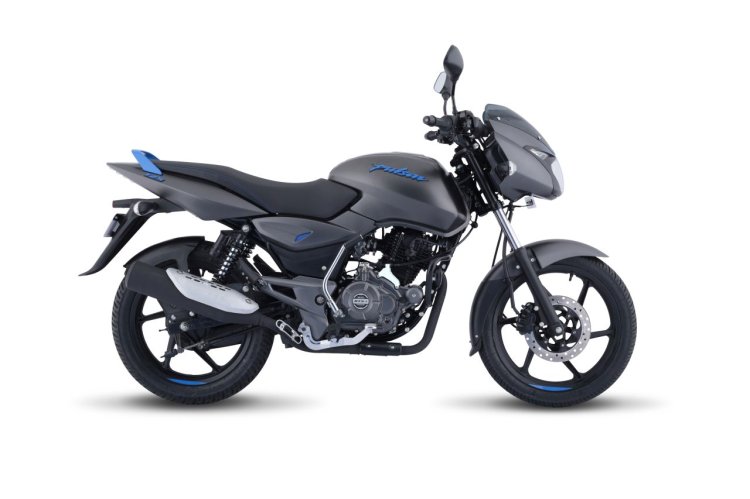
The Bajaj Pulsar 125 Neon is suspended over conventional 31 mm telescopic fork up front and twin Nitrox gas-charged springs with 5-step adjustable preload at the rear. That’s the same setup as that of the Pulsar 150. This further helped the folks at Bajaj save on research and development costs. Besides that, Pulsar 125 Neon also has an identical 1,320 mm wheelbase. Even the ground clearance is the same 165 mm. However, the Pulsar 125 is lighter than its elder sibling by 4 kg, weighing in at 140 kg (wet).
To keep entry-price low, Bajaj offers the Pulsar 125 with drum brakes at both ends in the standard trim. In this case, the front brake is a 170 mm drum unit anchoring the front wheel, while the rear gets a standard 130 mm drum unit. Besides that, Bajaj Pulsar 125 Neon is also offered with a 240 mm front disc, same as the one in the Pulsar 150. In comparison, Discover 125’s front disc is only a 200 mm unit.
The 17-inch wheels are shod with 80/100 section rubber at the front and a 100/90 section rubber at the rear. That’s the same spec as the one on the Pulsar 150. Also, the Bajaj Pulsar 125 Neon is the only bike other than the manic KTM RC125 in its class to get clip-on handlebar.
Also Read: 5 premium 125cc motorcycle we wish to see in India
Engine and Performance: Sacred number games
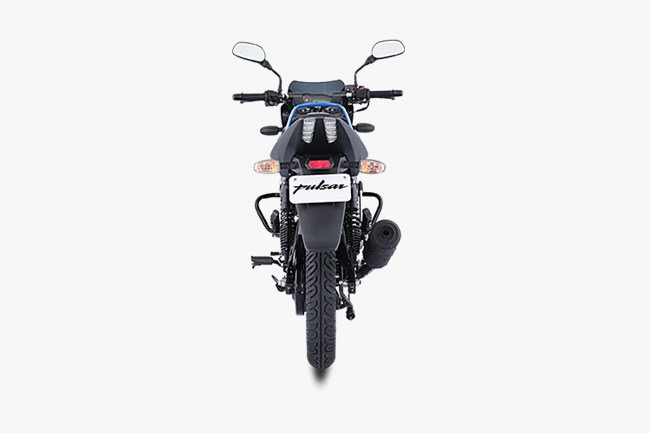
Powering the Bajaj Pulsar 125 Neon is a 124.4 cc single-cylinder air-cooled DTS-i unit. Unlike the 4-valve engine of the Bajaj NS125 retailed overseas, this one is a 2-valve unit. The max power output is a class-leading 12 PS, delivered at 8,500 rpm. The peak torque output is 11 Nm and achieved at 6,500 rpm. Coupled to the engine is a 5-speed gearbox.
That’s not all. The Bajaj Pulsar 125 Neon’s powerplant gets a counterbalancer to reduce engine vibrations. This will be a significant benefit at high engine speeds. The engine, though, is fed with the fuel-air mixture by a carburettor.
Also Read: Bajaj Pulsar 125 Neon vs. Hero Glamour vs. Honda CB Shine SP - Spec Comparison
Pricing: She is sexy and you know it!
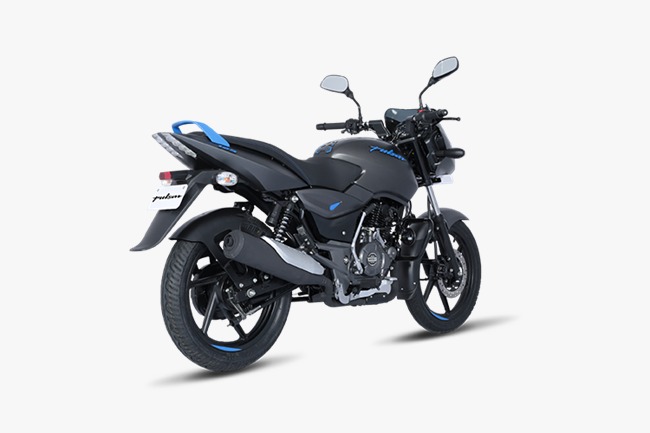
The Bajaj Pulsar 125 Neon has a starting sticker price of INR 64,000 (ex-showroom, Delhi) for the drum brake option. This makes it cheaper than the Honda Shine but almost 2,000 green leaves more expensive than the Hero Glamour (carburetted version). The disc brake version of Bajaj Pulsar 125 is offered at INR 66,618 (ex-showroom, Delhi).
Will Bajaj finally be able to crack the 125 code? Or will this too go down like the countless variants of Discover? Or sink perhaps like the nationalism frenzied V brand of motorcycles? Only time will tell.
Also Read: 5 motorcycles that failed to set the sales chart blazing








